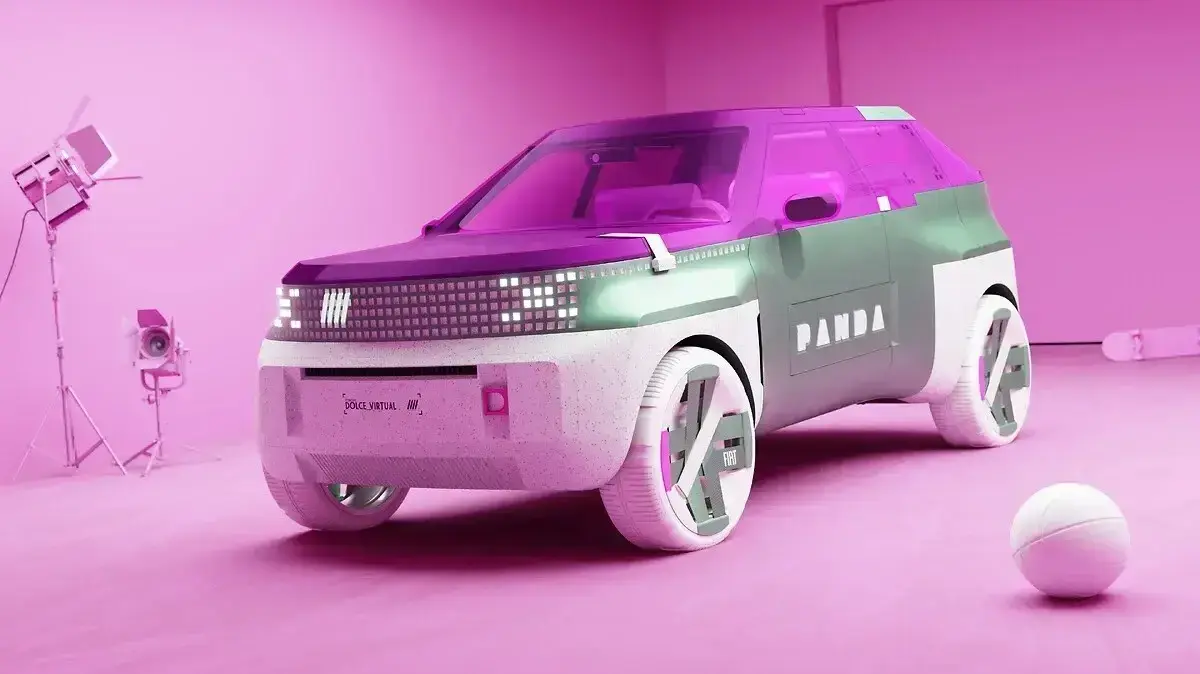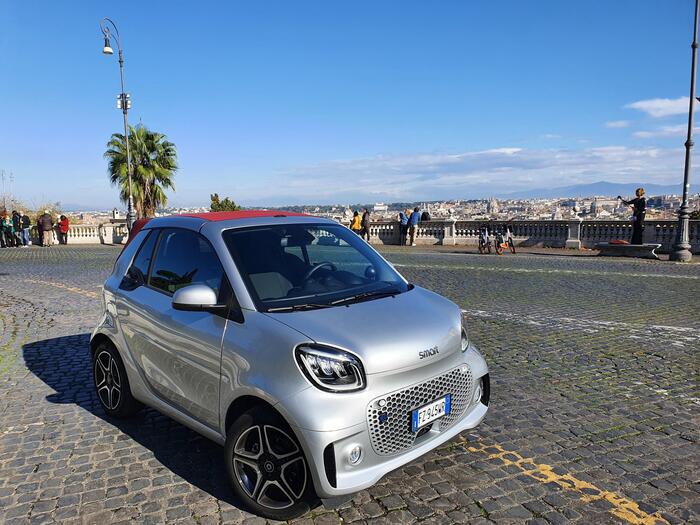Daring concept cars: ten spectacular studies that never went into production
Created: 06/01/2023, 06:00
By: Sebastian Oppenheimer
Concept vehicles are usually the stars of the auto shows.
Some studies become production cars - others remain curious one-offs.
1 / 10 10th place - Renault Trezor Concept (2016): At the Paris Motor Show in 2016, Renault presented a real eye-catcher: the futuristic flounder Trezor Concept gave a glimpse of what an all-electric Gran Turismo from the French could look like.
The highlight of the concept vehicle were the missing doors - instead, the roof and bonnet opened to get in.
However, it was already clear when it was presented: This vehicle is simply too extraordinary to ever go into series production.
It's nice to look at nonetheless.
© CTK Photo/Imago
2 / 10 9th place - Peugeot e-Legend (2018): Not everything has to be new: At the 2018 Paris Motor Show, Peugeot presented the retro study e-Legend.
When it came to design, the French were inspired by the 504 – a model that premiered in the late 1960s.
While the design looked to the past, a technical look was taken at the future: The vehicle was equipped with a purely electric drive and was intended to show how autonomous driving modes are imagined.
For example, the steering wheel could be lowered under the soundbar.
Nevertheless: The e-Legend did not go into series production.
© Xinhua/Imago
3 / 10 8th place - VW Futura (1989): When it comes to a trade fair show car, car designers like to use gullwing doors - this way even a relatively unspectacular vehicle looks at least somewhat exciting.
The VW Futura was also equipped with it in 1989 for its appearance at the IAA in Frankfurt - knowing full well that this complex technology will most likely not make it into a production model.
Both the wing doors and the glass tailgate could also be removed, making the Wolfsburg a kind of T-top convertible.
The Futura remained a one-off, but it did give a small preview of the design of the later VW Sharan.
© Volkswagen
4 / 107th place - Audi Urban Concept (2011): When it comes to show cars, every manufacturer has its own philosophy - in the case of Audi, the vehicles are usually a relatively concrete preview of a production car.
Not so with the Audi Urban Concept: At the IAA 2011 in Frankfurt, the Ingolstadt-based company showed the narrow-gauge vehicle in which two people can sit one behind the other.
The dynamic racing car look belied the modest engine: Two electric motors were supposed to deliver 20 hp.
The vehicle weighed only 480 kilograms – the top speed was 100 km/h, and Audi stated the range to be around 60 kilometers.
The study, which was designed purely as a city vehicle, was later also shown as a Spyder version – neither of which went into series production.
© Audi
5 / 106th place – BMW M1 Homage (2008): In the fall of 1978, BMW began production of the legendary M1 super sports car – by the end of 1981, 460 examples had been built.
However, the 277 hp from an in-line six-cylinder no longer sound really powerful.
All the more you remember the wedge-shaped design of the mid-engine athlete.
BMW revived the legend in 2008: at the Concorso d'Eleganza on Lake Como, the Munich company showed the BMW M1 Hommage.
The extremely designed study in orange metallic paint is a real eye-catcher.
The retro flounder did not go into series production - however, the design took something ahead of another vehicle: the BMW i8, which was built from 2013.
©BMW
6 / 105th place - Opel Monza Concept (2013): In production vehicles, gullwing doors are a real rarity - mostly you only see them in super sports cars, because the technology is complex and vulnerable.
But they are always an eye-catcher, which is why they are perfect for trade fair studies.
Opel also opted for this with the Monza Concept at the IAA in Frankfurt in 2013.
The series chances for a chic luxury coupé of this type from Opel were slim from the start.
It stayed with the one show car.
If you want to drive a Monza today, you have to look for an original that was built from the end of the 1970s.
© YAY Images/Imago
7 / 104th place – Bugatti 16C Galibier Concept (2009): Nowadays, the Bugatti brand is best known for two models: the Veyron and Chiron super sports cars – both equipped with a 16-cylinder engine and an output of well over 1,000 hp.
In 2009, however, with the Bugatti 16C Galibier Concept, the brand showed selected guests what a French luxury sedan might look like.
The public then got to see the show car at the 2010 Geneva Motor Show.
As the suffix "16C" reveals, the sporty sedan would also have been equipped with a powerful 16-cylinder engine.
The Galibier did not find his way into series production - if one can speak of it at all given the small quantities of the brand.
The special feature of the concept car remains all the more exclusive:
A Parmigiani Fleurier tourbillon watch is installed on the car's dashboard - this can be removed from the holder and worn as a wristwatch.
© Uli Deck/dpa
8 / 10 3rd place - Citroën Tubik (2011): Vans are visually rather unexciting vehicles, which has to do with their naturally mostly box-like shape.
At the IAA in Frankfurt in 2011, Citroën showed that such a vehicle can also be designed in an unusual way with the Tubik.
Whether you like the design - especially the front - is of course a completely different matter.
A huge double door gives access to the lounge-like interior of the Turik.
The seating offers maximum variability - and can also be converted into a bed, for example.
A vehicle of extremes that also remained a one-off.
© Sebastian Geisler/Imago
also read
Man forgets wife after toilet break: "He knew exactly what he was doing"
READ
Audi wants to cut costs in factories by half by 2033 - these are the consequences
READ
Salary tables at Audi: What employees can earn from beginners to managers
READ
Audi with future problems in the VW group - old criticism and new difficulties
READ
Audi explains the bankruptcy statement and the consequences for the company
READ
Fancy a voyage of discovery?
My space
9 / 10 2nd place – BMW E1 (1991): There are always concept vehicles that are simply too far ahead of their time.
One of these is probably the BMW E1, which the Munich company presented in 1991 at the IAA in Frankfurt.
A compact electric vehicle with a length of almost 3.50 meters, in which four people can find space.
The sodium-sulfur battery had a capacity of 20 kW and should have been sufficient for a range of around 200 kilometers under favorable circumstances.
As is typical for BMW, the 32 kW electric motor only drove the rear wheels, and the top speed was 120 km/h.
In 1993, BMW introduced a second version of the E1 - this time with an internal combustion engine.
But neither one nor the other variant made it into series production - nevertheless, the E1 is considered by some to be the early forerunner of the i3, which was produced from 2013.
10 / 10 1st place - Mercedes Nafa (1982): Looking at this vehicle, one might think of many manufacturers - but certainly not of Mercedes.
However, in 1982 the Swabians actually presented the Nafa study – an abbreviation for “local traffic vehicle”.
The angular box was just 2.5 meters long and 1.5 meters wide and high.
It offered space for two people and was designed as a minimalist city mobile.
The curious vehicle remained a one-off - and is still considered the forefather of later city speedsters such as the Smart or the A-Class.
© Mercedes-Benz
Shanghai, Geneva or Paris: Spectacular studies by the manufacturers are almost always the big stars at the major motor shows.
However, the car manufacturers are going completely different ways.
While some concept vehicles are pretty close to the production model - and later actually roll to the customer with only minor changes, other studies remain one-offs forever.
The reason for this can vary: some concepts are too far ahead of their time, others fail due to a negative echo.
And still others are simply designed from the outset just for the wow effect at a car show.
We present ten extraordinary studies that never made it into series production.








